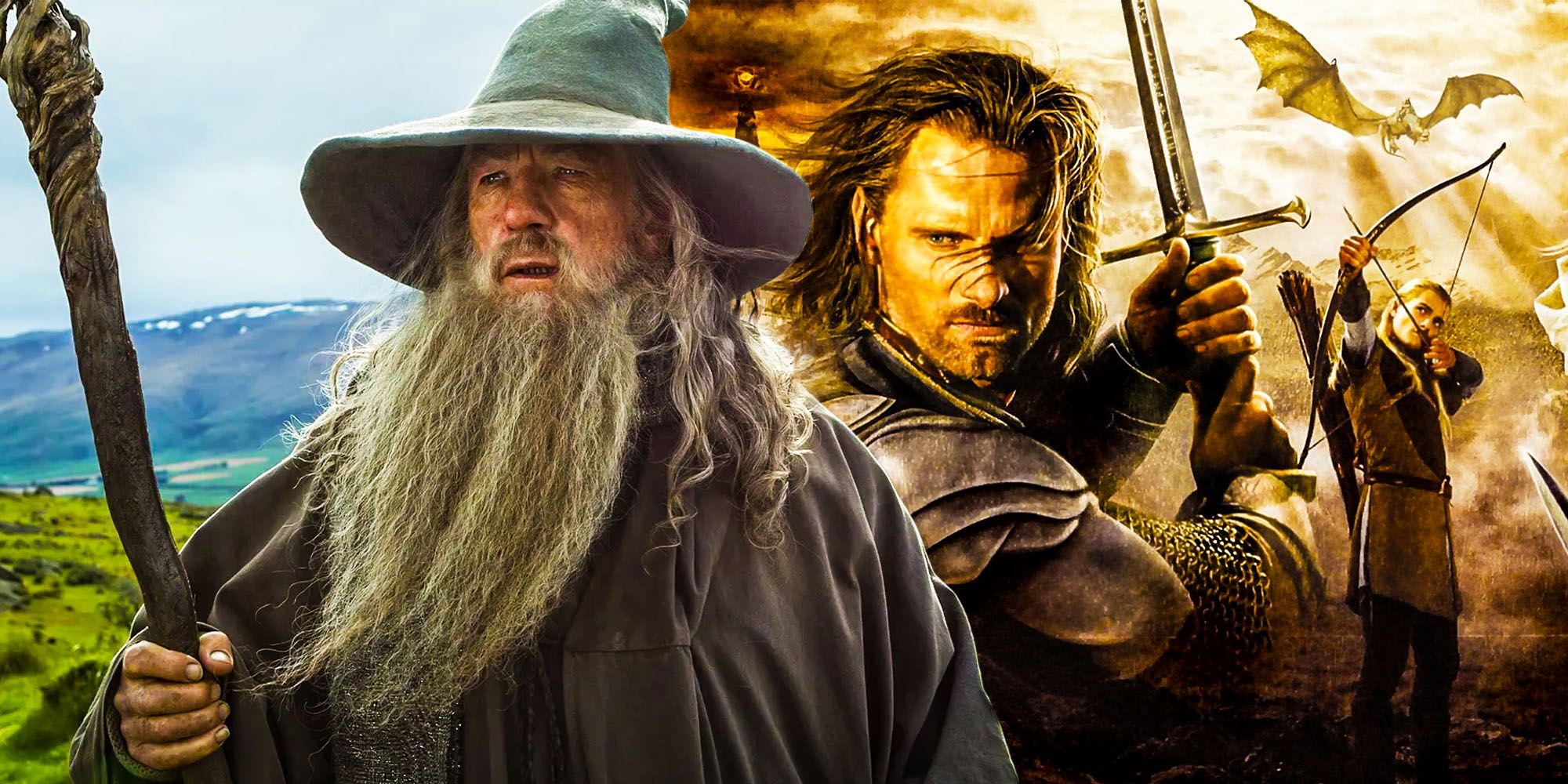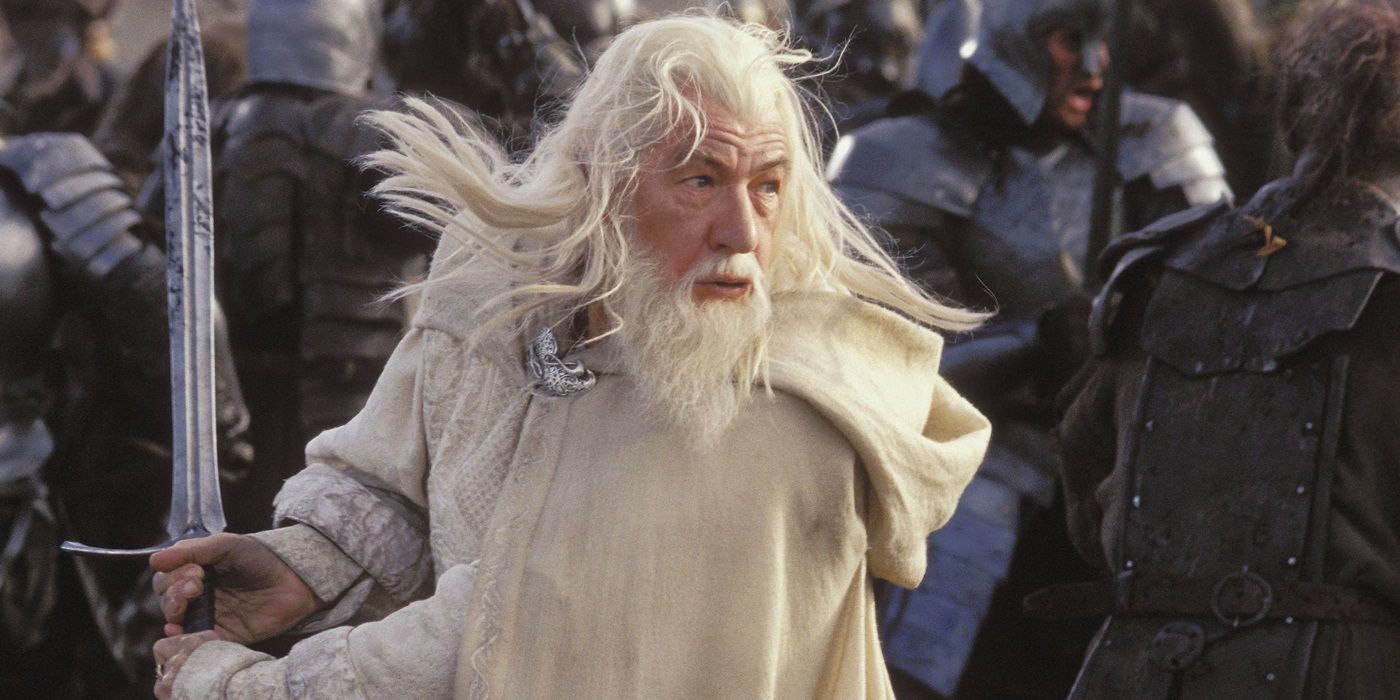While The Lord of the Rings movies cover a lot of ground from the books, they never fully showcase Gandalf's true power. With just over eleven hours of total runtime between its three films, the LOTR trilogy gives itself plenty of time to render the books' epic story in detail, as well as provide compelling character development for most of the series' many protagonists. At the same time, it leaves out some of Tolkien's dense lore, which helps fill in more details about the real extent of Gandalf's identity and power.
A recent Twitter debate over who would win in a fight containing Gandalf vs Yoda vs Dumbledore highlighted just how much deeper Gandalf's power really goes. Even from what the LOTR films do show, it's clear that Gandalf's immortality is a significant point. Unlike Dumbledore and Yoda, who return in less tangible forms after their deaths, Gandalf's resurrection is not only complete but rather an upgrade as well. After his death at the hands of the Balrog in The Fellowship of the Ring, he returns as Gandalf the White, with even more power than he had before. Suffice it to say, Gandalf is the favorite in that hypothetical three-way fight.
But The Lord of the Rings movies never addressed the real source of Gandalf's power. As a Middle-earth wizard, he's much more than a man born with magic powers or a unique connection to something like the Force. Rather, Gandalf is actually an angel of sorts. He's a Maia, a divine being sent to Middle-earth by its creator spirits, making him easily one of the most powerful characters featured in the LOTR movies, even if they don't show it.
The movies don't depict Gandalf's origin and powers in full because the books actually don't, either. Tolkien is best known for The Hobbit and The Lord of the Rings trilogy, but his true passion project was The Silmarillion, a sprawling collection of mythopoeic and origin stories that explain the creation and workings of Middle-earth and many other realms in the same universe. It's in this book, published after Tolkien's death by his son Christopher that the great fantasy writer really gets into the nitty-gritty of explaining the beings that created Middle-earth, including Maiar like Gandalf. Naturally, The Silmarillion's intricate mythology wasn't afforded much space in The Lord of the Rings books since their main goal was to tell a story in which Gandalf is a key figure, but not the protagonist.
The powers that the LOTR movies show Gandalf use, such as summoning beams of light or waves of force, making magical commands with his voice, and of course, making fireworks for the hobbits, certainly delineate him as a mighty being. However, because of his divine origins, the possible range of Gandalf's power goes far beyond this as well. Having helped the Valar (which are sort of like archangels) shape Middle-earth, Maiar likely come with the ability to not only manipulate matter and forces but create them as well. It's also quite possible that Gandalf is more omniscient than he lets on in the Lord of the Rings movies, and his immortality means he has thousands of years of wisdom under his belt. Thus, while it's certainly impressive that Gandalf returns reborn in The Two Towers, even his status as Gandalf the White barely scratches the surface of who he really is and what he has done or can do.
Adapting dense literature to the screen is always tricky, but Peter Jackson's LOTR and The Hobbit trilogies stand as strong examples of how to do it well. Nevertheless, there will almost always be something left out when long, complex books get translated into films. Because of this, though they have made him a household name and a truly beloved character, The Lord of the Rings movies don't actually show the full range of Gandalf's power.


